Fatalities 1 | ||
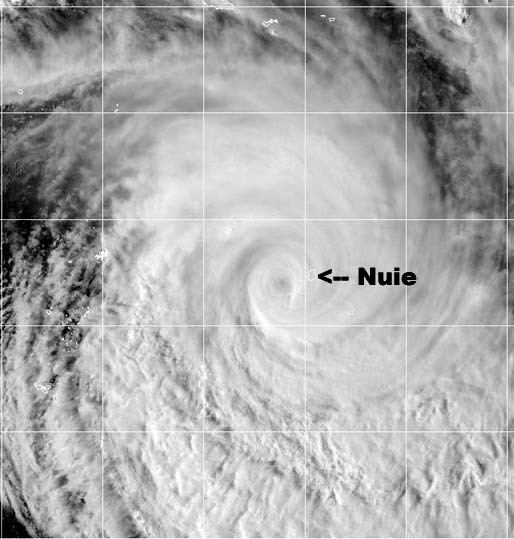 | ||
Formed December 25, 2003 (2003-12-25) Dissipated January 8, 2004 (2004-01-09) Highest winds 10-minute sustained: 215 km/h (130 mph)1-minute sustained: 260 km/h (160 mph) Lowest pressure 915 hPa (mbar); 27.02 inHg Damage $113 million (2004 USD) Date 25 December 2003 – 8 January 2004 Similar Cyclone Ofa, Cyclone Olaf, Cyclone Ivy, Cyclone Val, Cyclone Waka | ||
Severe Tropical Cyclone Heta was a powerful Category 5 tropical cyclone that caused catastrophic damage to the islands of Tonga, Niue, and American Samoa during late December 2003 and early January 2004. Heta formed on December 25, 2003; it reached a maximum intensity of 160 mph (260 km/h) and an estimated pressure of 915 millibars before dissipating on January 11, 2004. It was the first tropical cyclone to form in the area of responsibility of the Regional Specialized Meteorological Centre (RSMC) at Nadi, Fiji, during the 2003–04 South Pacific cyclone season.
Contents
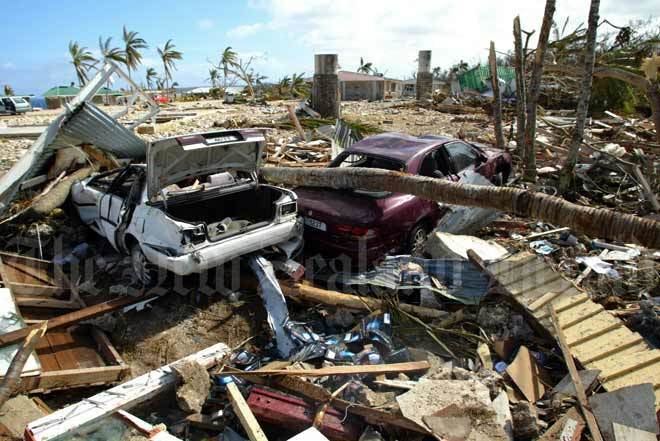
The damage Heta caused on Tonga, Niue, and American Samoa was estimated at $150 million (2004 USD), with most of the damage occurring in American Samoa; the cyclone was also responsible for one death. Heta precipitated a massive relief and clean-up operation that lasted throughout 2004.
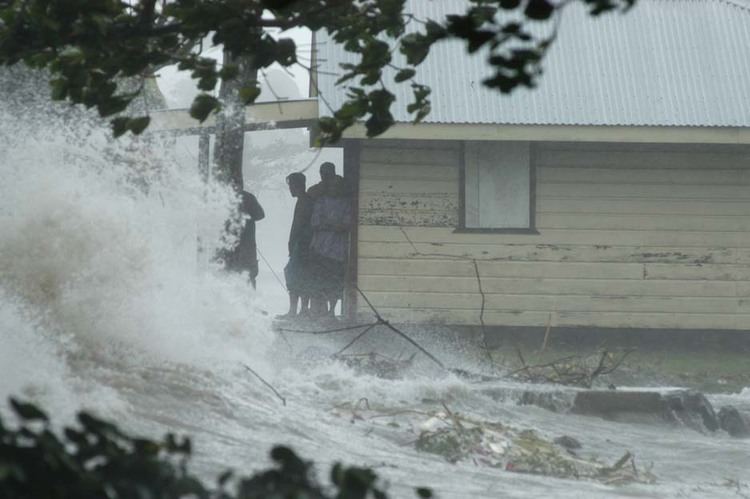
Meteorological history
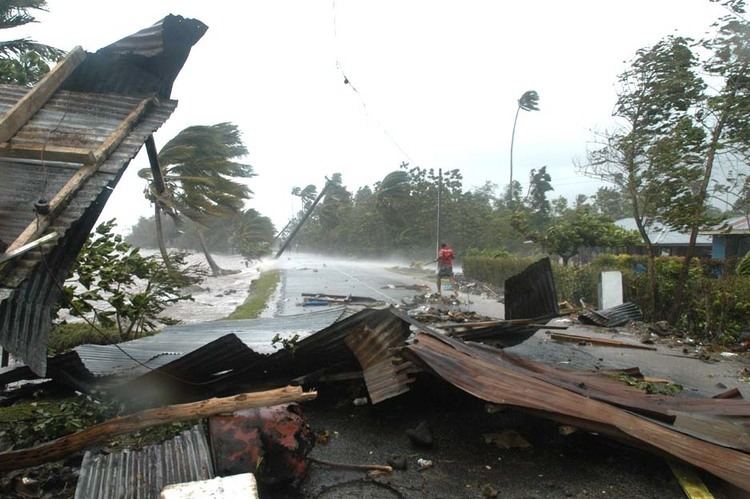
Heta formed from a tropical wave between Rotuma and Fiji on December 25, 2003. It moved eastward to a position north of Fiji, where it was designated Tropical Depression 3-F on December 28. The depression migrated first northward and then eastward until January 2, 2004, when it reached tropical storm strength and was named Heta. At this point, low wind shear and high sea surface temperatures caused Heta to intensify rapidly. On January 3, Heta, aided by a weak steering current, slowly began to move to the southeast as it became a Category 1 hurricane.
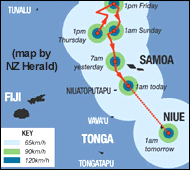
The center of Heta passed 70 miles (110 km) west of Samoa as the storm reached Category 2 status. Heta reached a peak intensity of 160 mph (235 km/h) and maintained it for 24 hours as it continued its south-southeastward track. By that time, Heta was centered 50 miles (80 km) northeast of Tonga, close to the island of Niue. By January 7, Cyclone Heta had exited the Nadi RMSC's area of responsibility and entered that of the Tropical Cyclone Warning Center at Wellington, New Zealand. The storm slowly weakened as it encountered the cooler waters of the far South Pacific. Heta became extratropical 525 miles (845 km) south of the island of Rarotonga later on the 7th. These remnants of Heta slowed even further and moved westward, where they finally dissipated on January 11 east of Norfolk Island.
Preparations
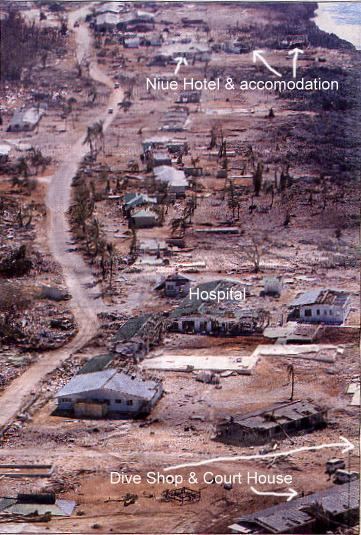
On January 2, the meteorologists of the Australian Foundation for the Peoples of Asia and the Pacific (AFAP) warned that Heta could hit Tokelau, and predicted that the storm would turn south and pass to the west of Samoa. The following day, however, the advisory area was extended to include Samoa and then Niue and Tonga. At that point, the AFAP forecast that the storm would hit Niue as a Category 2 or 3 tropical cyclone in 12–24 hours. On January 6, when Heta reached Category 5 status, the AFAP predicted that the storm would hit Tonga and its surrounding islands the following day, bringing strong wind and rain damage. In Niue, anticipating that the storm would bring catastrophic damage, 1300 residents sought shelter in their homes while others evacuated coastal areas to higher ground. In Samoa and American Samoa, although hurricane warnings were in effect, there were no reports of evacuations or storm shelters being opened before the storm.
Impact
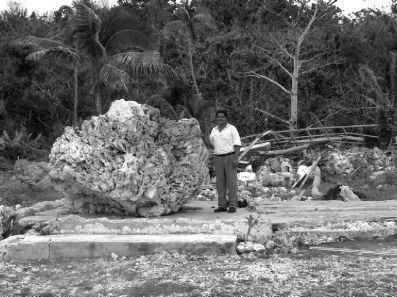
Cyclone Heta caused around $110 to $150 million (2004 USD) in damage and one fatality in its path across Tonga, Niue, Samoa, and American Samoa.
During its early stages, Heta brought heavy rains and light winds but caused little or no damage. In Wallis and Futuna, however, high winds knocked out power and there was minor to moderate damage to buildings and crops. In Tonga, Heta's strong winds damaged houses and caused severe crop damage, mostly to breadfruit, mango, tava and bananas. In Tafahi and Niuatoputapu, 50-100% of the homes and buildings were destroyed by the cyclone's powerful, Category 5 winds. However, because of advanced warnings, there were no deaths or injuries. Structural damage in Tonga amounted to $160,000 (2004 USD).
In Niue, a weather station recorded a barometric pressure of 945 millibars before it became inoperable. The capital city of Alofi, which took the brunt of the storm, was devastated as most of the commercial and financial areas were wiped out by the high winds. Damage to communications and electronic infrastructure was also great as the storm damaged a satellite dish and disabled 75% of Niue's computer database. The storm surge brought by Heta left two people dead. In all, the storm caused over $85 million (2004 NZD) in damage on the island, five times its 2003 GDP of $17 million.
In Apia, Samoa, the heavy rains brought by Heta caused isolated reports of flooding. Heta's storm surge also closed down or washed out several roads. In Savai'i, the cyclones winds damaged powerlines, which made communications with the city difficult. In American Samoa, two weather stations reported winds of 75 mph (120 km/h) with gusts of 115 mph (185 km/h). The high winds destroyed over 600 homes and damaged 4,000 others. Offshore, the storm brought waves up to 44 feet (13 m) high along the north and western part of the island. The combination of rough surf and storm surge damaged or destroyed many boats near Swains Island. Although no deaths were reported in Samoa, the storm managed to injure 20 people and leave between $50–150 million (2005 USD) in damage.
Aftermath
The government of Niue declared a state of emergency after Cyclone Heta's impact. On January 8, New Zealand and Australia provided relief aid and supplies to the displaced residents. The aid provided by New Zealand's government amounted to $5 million (2004 NZD). The devastation left by Heta led to a major recovery plan by the government of Niue that lasted throughout 2004 and cost over $20 million (2004 NZD). In Samoa, the International Red Cross and Red Crescent sent 60 volunteers, and distributed 150 tarpaulins and 340 water containers and blankets to the devastated area. On January 9, the number of volunteers increased to 100, and over 944 aid items were distributed. In Tonga, the Red Cross conducted a damage survey and provided relief aid to Niuatoputapu, which was hit especially hard by the cyclone. In addition, New Zealand provided $10,000 (2004 USD) worth of supplies and relief aid to Tonga.
In American Samoa, Governor Aitofele Sunia declared a state of emergency after the cyclone, and later President George W. Bush declared the U.S. territory a disaster area. The declaration made the territory eligible for federal assistance and relief. The damage from the cyclone caused an evacuation of 140 residents to relief shelters, thirteen of which were opened after the storm. In addition, the Small Business Administration (SBA) offered $40,000-$200,000 (2004 USD) in repair loans for residents and $1.5 million (2004 USD) in repair loans for businesses. The federal government offered $22 million (2004 USD) in relief aid through the Federal Emergency Management Agency (FEMA). The United Church of Christ also provided $5,000 in relief aid.
